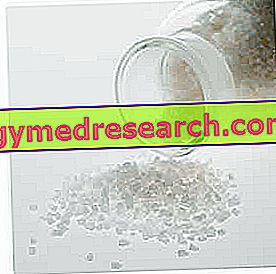When the cough is fat
The fat or productive cough is distinguished by the violent expulsion from the mouth of a thick and viscous sputum, phlegm, which is absent in the dry or non-productive variant.

- The fatty cough is due to the clogging of the bronchi by more or less consistent mucus accumulations.
Flu and fat cough
Flu and cough often walk by the hand: not surprisingly, most airway infections occur with more or less frequent coughing attacks. More precisely, the course of the cough during the flu illness is not constant: if a cold and flu typically start with a dry cough, in the more advanced stages the productive cough takes over. The appearance of fat cough is generally interpreted as a complication of primary respiratory disease, synonymous with an ongoing (often bacterial) infection.
In most cases, fat cough dependent on similar respiratory pathologies tends to regress by itself within a matter of days, without necessarily resorting to the use of mucolytic drugs.
Only in case of need, the doctor can prescribe cough or other therapeutic aids to lighten the symptoms and speed up the recovery.
What can it be?
The fat cough does not only occur in the context of cold and flu: it is in fact a recurrent symptom in numerous respiratory diseases.
Starting from the characteristics of fatty cough and from the analysis of related symptoms, we try to provide useful elements for a first and hypothetical self-diagnosis (which must always be ascertained by medical diagnostic tests):
Characteristics of fat cough and associated symptoms | Diagnostic hypothesis (requires medical assessment) |
Fat cough accompanied by greenish, mucous and abundant catarrh |
|
Initially, the cough is dry and irritated; after a few days, the cough becomes productive. The patient's clinical picture is completed by symptoms such as fever, sore throat, headache and general malaise |
|
Fat cough accompanied by bloody sputum (hemoptysis) |
|
Fat cough, sometimes bloody, accompanied by high fever, chills, difficulty breathing, dense chest, profuse sweating |
|
Fatty cough accompanied by emphysema, obvious lung damage, fibrosis, dyspnea, fatigue, weight loss |
|
Fat cough accompanied by a fetid-smelling sputum |
|
Foamy, rosy and serous sputum |
|
The consistency and appearance of the phlegm emitted during a fat cough is comparable to the currant jelly |
|
Fat cough is accompanied by a blackish or very dark sputum |
|
Some diseases or ailments can start indifferently with a dry cough or fat cough: in these cases, the careful and expert eye of a doctor is indispensable for tracing back to the triggering cause through the meticulous evaluation of the "accompanying" symptoms.
For example, lung cancer, COPD and some seasonal allergies to the respiratory tract (eg hay fever) may present a typically dry and irritated cough or begin with violent coughing fatty. It is clear that in these cases a first self-diagnosis is rather complex, as well as useless: it is therefore recommended to request a check-up as soon as possible.
Other times, cough can be a side effect of a therapy: for example, an incorrect dosage (dosage) of Coumadin - a well-known anticoagulant drug - can also cause the emission of fat cough with traces of blood.
Given that fat cough is a recurrent symptom in many diseases, it is well understood that differential diagnosis is essential for healing.



